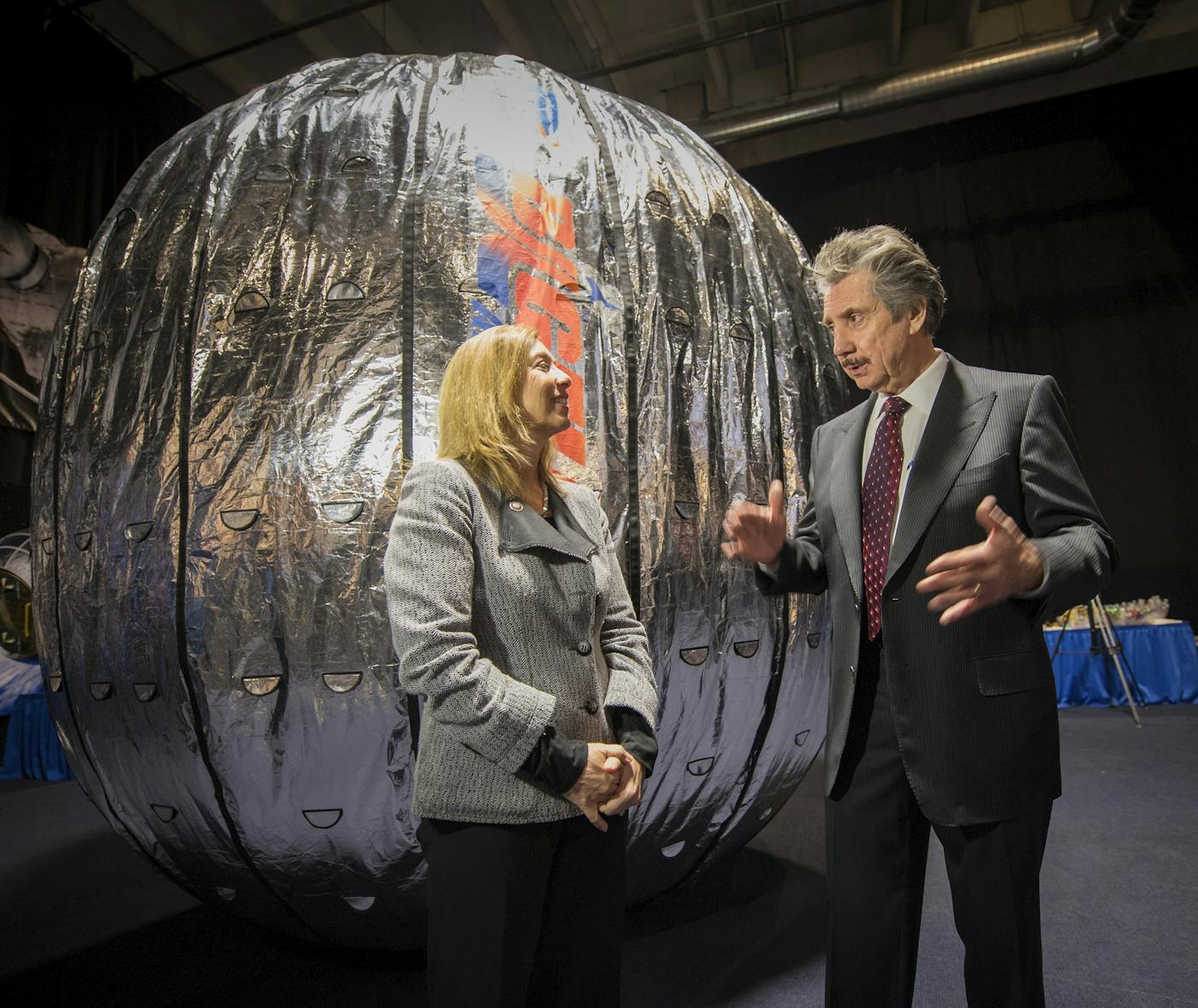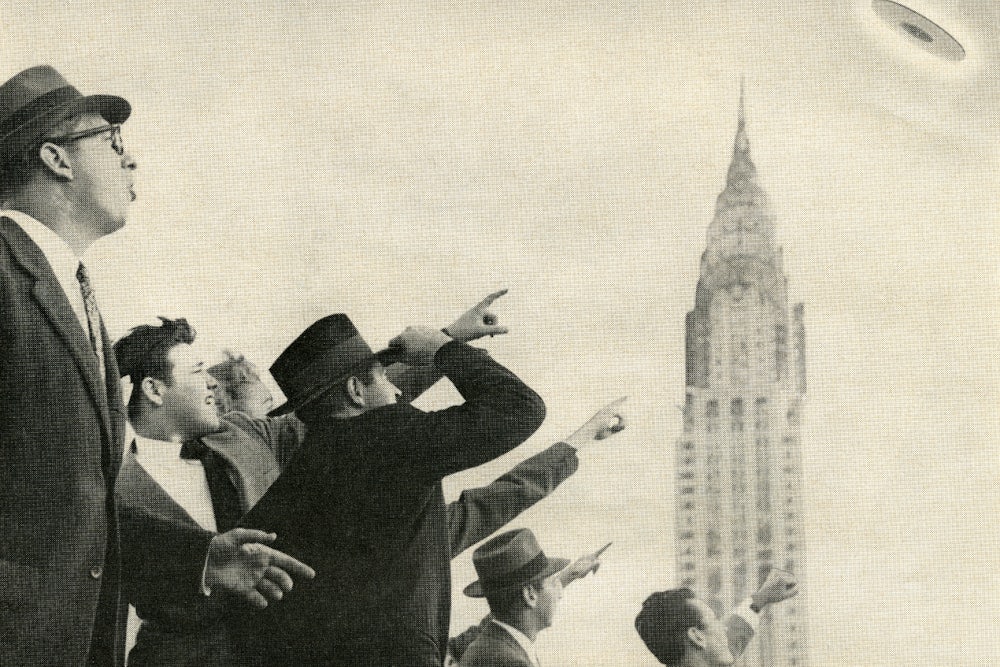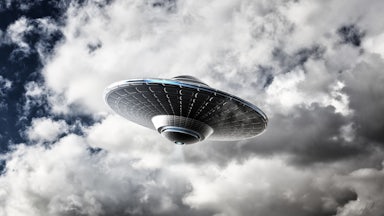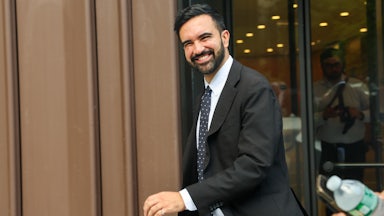On April 30, the online UFO community lit up with excitement. The New Yorker, the most luxe of news magazines, published a major UFO article by Gideon Lewis-Kraus alleging there was good reason for the U.S. government to get back into the business of hunting flying saucers. On May 16, CBS’s Sunday Morning and 60 Minutes broadcast stories about UFOs, with Florida Senator Marco Rubio sternly intoning about the importance of treating them as a potential national security concern. All month, major media have jumped on the bandwagon. Magazines published think pieces. Ezra Klein gushed about the “spaciousness of mystery” in The New York Times. Morning Joe invited Lewis-Kraus on to chat about UFOs, and Gadi Schwartz did multiple spots across NBC’s broadcast, cable, and streaming platforms breathlessly hyping new videos from the Navy showing fuzzy shapes in the sky.
For UFO believers, this was the moment they had been waiting for. UFOs were everywhere, and they were suddenly respectable. With a new intelligence report on UFOs due to be delivered to Congress in June, even the U.S. government seemed poised to take UFOs seriously again. For many on UFO Twitter, only one word could describe this seemingly spontaneous explosion of UFO excitement: disclosure, the longed-for moment of revelation when believers prophesy the Pentagon will confirm UFOs are real and unearthly, and everything will change. “It’s happening,” UFO YouTuber Jane Kyle tweeted about the 60 Minutes story: “#disclosure.”
But the real story isn’t disclosure, and it’s stranger than any UFO sighting. Behind the creamy pages of high-end magazines and the marble columns of the Capitol, the media elite and Congress are being played by a small, loosely connected group of people with bizarre ideas about science. It’s easy to dismiss UFOs as a fantasy or a fad, but the money, the connections, and the power wielded by a group of UFO believers—embedded in the defense industry and bent on supplanting material science with a pseudoscientific mysticism straight from the History Channel’s Ancient Aliens—poses a danger to America more real than a flying saucer.
And it all started with poltergeists from another dimension.
If there were a moment of original sin in our story, it took place in 1966. J. Allen Hynek, the astronomer who pioneered the scientific study of UFOs for the Air Force’s Project Blue Book, told his friend, French UFO researcher Jacques Vallée, his deep dark secret: In terms of his scientific outlook, he wasn’t a strict materialist; instead, he was guided by his fascination with mysticism and the occult. Over the next decade, the two men toyed with the notion that UFOs weren’t alien spaceships at all but, rather, space poltergeists from another dimension. The two men’s discussions had a profound impact on a friend with an office near Vallée’s in the 1970s, an ex-Scientologist and physicist named Harold E. “Hal” Puthoff. Puthoff, who studied psychic phenomena at the Stanford Research Institute, where he championed debunked spoon-bender Uri Geller, was also a defense contractor, and the intelligence community recruited him for a bonkers effort to use psychics to spy telepathically on the Soviets, later known as “Project Stargate.” In 1984, one Stargate “psychic” claimed to travel back in time one million years to commune with Martians.
Puthoff was the brains behind what the intelligence community referred to as the “remote viewing program,” and he worked with an informal group of colleagues on a range of paranormal issues, a team that Vallée termed the “invisible college.” Over the next half-century, Puthoff would help to keep interest in UFOs alive inside the government.
In 1995, Project Stargate ended in failure. Government interest in UFOs and the paranormal might have faded away just as surely if not for the interest of a wealthy hotel magnate, Robert Bigelow, who had spent a lifetime obsessed with the paranormal and became a patron of UFO conspiracy theorists. Bigelow went into business with Area 51 conspiracy nut Bob Lazar, and he funded the research of dubious alien abduction investigators Bud Hopkins and John Mack.
“Invisible college” members moved through a series of paranormal initiatives and organizations in the 1990s, culminating in Bigelow’s National Institute for Discovery Science, a private organization in which several members studied UFOs and the paranormal between 1995 and 2004. Vallée sat on its board. NIDS primarily researched—and failed to prove—the supposed paranormal mysteries of a patch of desert in Utah called Skinwalker Ranch. Puthoff and the NIDS team believed it to be a supernatural gateway to the space ghost dimension. (The ranch is now the set of a paranormal reality TV program.) Remarkably, they managed to convince a visiting Defense Intelligence Agency scientist, and the DIA partnered with Bigelow to investigate space ghosts.

Bigelow leveraged his friendship with Democratic Nevada Senator Harry Reid, who thought Bigelow to be “brilliant” and who received tens of thousands in campaign donations from him. Reid and two other senators moved to expand the Skinwalker Ranch investigation into a fully funded government program, despite the Pentagon’s complete lack of interest in UFOs or space spooks, mandating that the military research “aerial threats” at a cost of $22 million over five years. Bigelow, the only bidder, received the contract to research these “threats.”
The only public accounting of the program’s research was a list of its theoretical papers on stargates, wormholes, and other sci-fi topics that “invisible college” members like Puthoff obsessed over, as well as a proprietary 494-page 2009 “ten-month report” from Bigelow’s team in which Puthoff, Vallée, and others wrote about UFOs, “interdimensional phenomena” at Skinwalker Ranch, and alleged technology aliens implanted in a UFO abductee. Pentagon officials quickly concluded that releasing such an absurd report “would be a disaster,” as one unnamed official told The New Yorker. Eventually, Team Space Ghost developed a bizarre mythology, imagining that an organized cabal in the Pentagon actively suppressed UFO work because it feared UFOs were demons and that researching them might provoke Satan.
The program’s funding ran out in 2012. But its supporters have continued to labor tirelessly to push its ideas into the mainstream. Ex-official Luis Elizondo says he continued the program’s work through a different office before he left the Pentagon for reality TV. (The Pentagon denies Elizondo’s account and insists he had no “assigned responsibilities” for the program.) Despite claiming to believe UFOs were an imminent national security threat, he didn’t take his concerns to national security journalists or to Congress. He joined up with Puthoff and Team Space Ghost at their new entertainment company, To the Stars Academy of Arts and Science, styled TTSA.
They were not master manipulators. But they succeeded in manipulating the media anyway.
Their first effort involved joining forces with fading rock star Tom DeLonge of Blink-182. DeLonge reached out to former Obama White House counselor John Podesta in 2016 for help meeting with investigative journalist and paranormal enthusiast Leslie Kean or “somebody else more elevated than her” to help promote his UFO entertainment ventures.
In many ways, Kean was the perfect vehicle for a UFO story. She knew everyone involved. In 2002, Kean joined the Sci-Fi Channel and Podesta to sue the government for the release of UFO information. A regular at UFO researcher gatherings, Kean had been the last romantic partner of Budd Hopkins, and they were together when she published a credulous book on military UFO sightings in 2010 with a foreword by Podesta. (Hopkins died in 2011.) She later joined UFODATA, a UFO research organization, where she met a scion of the Mellon family, Christopher K. Mellon, a former defense official and Senate staffer. Mellon had been briefed on Project Stargate when in office and professed a love of UFOs. He became an investor in TTSA, staffed by Bigelow veterans like Puthoff. When Elizondo brought his story to TTSA, Mellon knew whom to call.
The TTSA team met with Kean on October 4, 2017, and she gushed over them in the Huffington Post six days later. The Huffington Post was exactly the kind of second-tier pop culture media like Rolling Stone, Politico, and Joe Rogan’s podcast that TTSA courted at first, lacking connections at more elite publications. That’s when dumb luck hit. Kean had an idea.
After the meeting, Kean contacted retired New York Times reporter Ralph Blumenthal, whom she knew because of their shared connections in the alien abduction world. Blumenthal was working on a biography of John Mack, a colleague of Hopkins also funded by Bigelow. Blumenthal called the Times and convinced the paper to run the story—and it was a good story—that a billionaire had scored himself a personal military UFO research program. But Blumenthal and Kean framed the story as one of military interest in UFOs, not Bigelow’s, thus shaping media and congressional perceptions of the program.
Kean and Blumenthal’s first Times UFO story ran on December 17, 2017, on page one. Blumenthal had given TTSA something the “invisible college” had tried and failed to gain for years—elite respectability. Major media now ran countless stories, citing the Times as excuse, with little mention of space ghosts or anything that might make the program seem unserious. This lent it more credibility. TTSA used Mellon’s connections to meet with Senate staffers primed by the Times coverage. Senators, including Mark Warner and Marco Rubio, radicalized by media coverage and lobbying from Mellon’s team, subsequently requested briefings from the Pentagon, allegedly to understand what they were reading in the news. Mellon praised Rubio for using last year’s Intelligence Authorization Act to require that the military and intelligence agencies produce a report about UFOs. “It further legitimizes the issue,” Mellon said. It could also create a rush for new defense contracts.
By this spring, the imminent report, and prodding from Mellon and Kean, prompted another round of uncritical media coverage. Kean and Elizondo were profiled in the aforementioned credulous New Yorker article tied to the congressional report Mellon had lobbied for, and within days, Elizondo and Mellon—who left TTSA for their own unnamed new national security UFO venture—were everywhere in the media, from 60 Minutes to CNN, reinforcing a threat narrative the Pentagon and UFO skeptics did not recognize.
The threat narrative was a brilliant bit of framing, turning a story of poltergeist hunters battling a cabal of demon-believers into a national security issue. But this influence campaign masks the deeper transformation its advocates want to bring about: Puthoff and his colleagues seek to delegitimize material science in favor of a magical, neo-medieval view of reality founded on spirit—or, in their terms, “consciousness” and psychic powers. Elizondo still speaks of demon cabals, otherworldly beings, and UFOs operating beyond human perception—just not on 60 Minutes. UFOs, newly relevant as a security threat, are only the vanguard of a larger effort to undo the failure of Stargate and elevate spirit over matter. It’s bad science and dangerous as government policy, the kind of magical thinking that leads to lunacy and disaster.
CBS’s David Pogue literally chuckled during his Sunday Morning UFO report, telling viewers we should “live and let live” and not challenge UFO believers. Klein and Lewis-Kraus said they would be sad without a UFO mystery to enjoy. HBO Max announced a valorizing biopic about Kean, Elizondo, and Mellon. So long as a compliant media plays along with the “fun” of UFOs, the clumsy effort to use them to break down modern science continues unabated. And Bigelow is prepared: Blumenthal recently gave him a lavish New York Times profile to launch his new think tank for “consciousness science” and afterlife studies. Bigelow appointed Hal Puthoff, members of the “invisible college,” and Leslie Kean to its board.
We know the consequences of embracing bad science and replacing facts with conspiracy theories and pseudoscience. Stalin’s embrace of Lysenkoism ravaged Soviet science for decades. The Trump administration’s science denial and conspiracy theories devastated American health and American democracy. We have a good idea what will happen, and we shouldn’t let enthusiasts of space ghosts have the run of Washington to steer money and policy in the direction they want. If they insist UFOs are a national security threat, then the national media must take them at their word. No more chuckles. No more rhapsodies about mystery. We must hold Team Space Poltergeist to the levels of skepticism, seriousness, and scrutiny it pretends to demand. Quite literally, the future depends on it.








